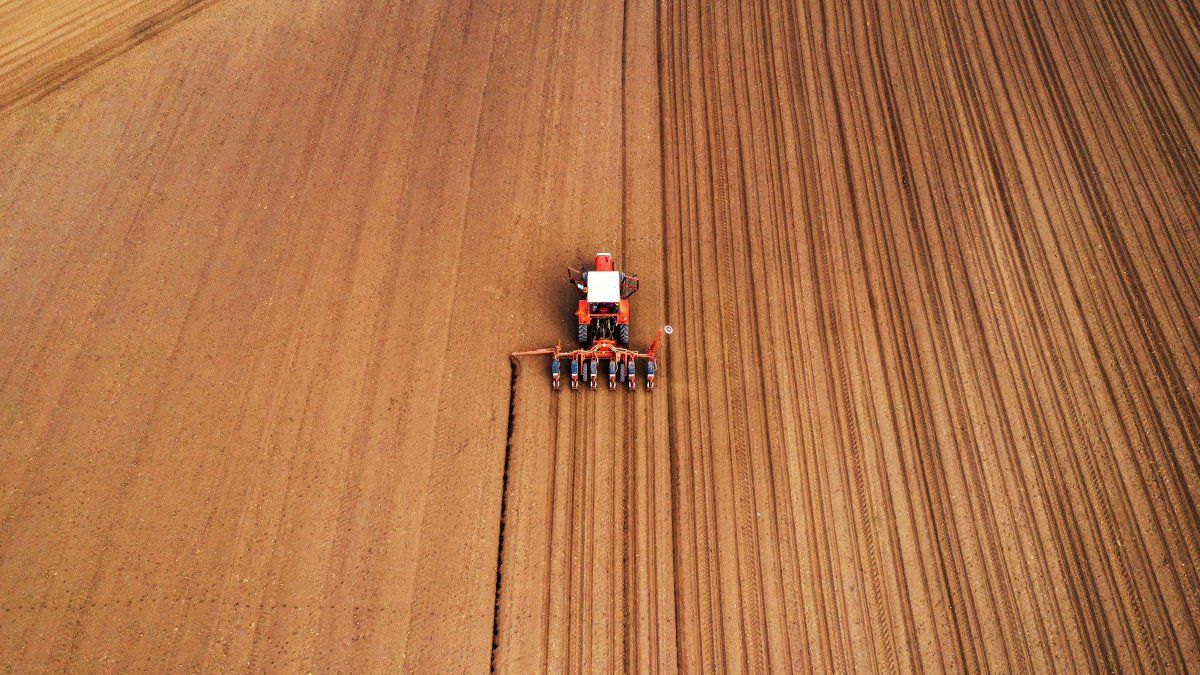The soy chain Face a critical situation. While global production continues to rise, driven by Brazil and the United States, in Argentina the sector is stagnant. The lack of effective measures and an unavailable agricultural policy generated a worrying brake on the growth of the country’s main currency source. The export of soy flour is found on a plateau, while in the mentioned countries they continue to constantly expand, which puts Argentina in an increasingly weak position in the international market.
According to a study by the consultant Javier Preciado Patiño, an analyst at RIA Consultores, for the Association of the Argentine Soy Chain (acsoja), The traffic jam suffer the sector could lead to a loss of up to US $ 5,000 million annually, which would affect not only the entry of currencies, but also the economic stability of the country. The dependence of soybeans as an economic engine is undeniable and the lack of competitiveness against the main global producers could bring devastating consequences.
Coplocal and international ethics that affect competitiveness
One of the key factors that impacts the Argentine soy chain is the policy of biofuels of the USA The US government implemented subsidies and long -term credits that encourage investment in soy processing, which allowed to increase its grinding capacity and, therefore, the production of soy flour. Meanwhile, Argentina faces an elevated tax burden with export rights (DEX) that reach (while the temporal reduction governs) 26%, compared to 9.5% applied to corn and wheat. This tax inequality affects the profitability of the sector and discourages investment.
Biofuel bioethanol.jpg
One of the key factors that impacts the Argentine soy chain is the US biofuel policy.
According to Patiño, Access to markets also represents a significant problem. The United States and Brazil knew how to position themselves strategically, consolidating their presence in key markets such as Southeast Asia. Meanwhile, Argentina reduced its participation in the global soymeal trade in recent years, which represents a setback in its historical role as the main world supplier. This change in commercial dynamics reflects a structural weakness that, if not corrected, could become an irreversible obstacle to the installed industry – its vast majority – near the port of Rosario.
Urgent measures to save the industry
To reverse this situation -as detailed by Patiño- Concrete political decisions are needed to recover the competitiveness of the sector. In recent times, several agro analysts stated that it would be essential to increase biodiesel cutting in domestic consumption, which would contribute to withdraw oil from the global supply and stabilize its price.
This strategy could generate better conditions for Argentine soybean flour in the international market. In turn, the reduction of retentions and comparison with cereals would improve the profitability of producers and stimulate greater production.
Another fundamental aspect goes through the improvement in logistics infrastructure. Hydrovia dredging optimization would allow greater efficiency in the transport and export of soybean products. The competitiveness of the industry could also benefit from tax incentives for the production of certified and fertilizer seeds, measures that could reduce costs and favor the expansion of the sector. These last themes were attempted again and again in Congress, however – and if it is difficult to understand it – the necessary thrust was never found among national legislators to give the most competitive sector of the economy the necessary tools to enhance its productivity.
The present of the soybean complex must put us on alert, since the lack of concrete measures could cause divestment in the grinding industry, with the closure or sale of existing plants. This situation would especially affect national capital companies, which have less access to international financing. Besides, It is estimated that 40,000 direct jobs could be lost, impacting one of the best paid industries in the country.
Preciado Patiño report also highlights that, Between 2012 and 2024, world soy production grew by 59%with Brazil, doubling its production and the US increasing by 44%. In contrast, Argentina maintains a stagnation around 50 million tons. The country’s participation in global production fell from 18% to 12%, while Brazil went from 31% to 40% and the US barely decreased from 31% to 28%.
This scenario reflects a displacement of Argentina in the global market and is largely due to self-inflicted damage by rulers that little and nothing know of agricultural policies, which by absent left the sector in a vulnerable position.
The claim of the soy chain
The tax policies, the lack of incentives and the aggressive competence of Brazil and the US are putting the main source of foreign exchange of the country. As they say in football, the rival also plays and if urgent measures are not taken, Argentina could lose its leadership in the export of flour and soybean oil, generating a negative impact on the national economy.
The agribusiness sector demonstrated several times throughout recent economic history to be key to the development of the country. Now, the decision is in the hands of the government and the actors in the market, which with this type of reports and presentations seeks to give visibility to a productive chain that requires urgent measures to recover the competitiveness that allows it to get out of the stagnation and begin to grow.
Source: Ambito




